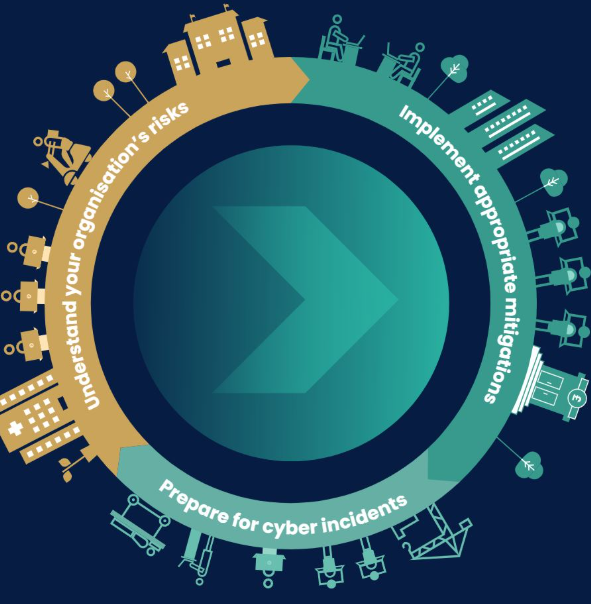Building a Resilient Cybersecurity Risk Management Cycle
- 72 Views
- admin
- 06/15/2024
- Cybersecurity
Cybersecurity threats are no longer rare disruptions—they’re a constant reality. As digital environments expand and attackers become more sophisticated, businesses are shifting from reactive security postures to structured, data-informed risk management strategies. This evolution has made cyber risk management not just a technical responsibility, but a fundamental business function.
A key part of this shift is cyber risk quantification (CRQ), which allows organizations to assign measurable value—often financial—to the threats they face. By doing so, businesses can evaluate risks in terms that align with decision-making at the executive level and guide continuous improvements to their overall security strategy.
Introducing a Cyclical Framework for Cyber Risk Management
Rather than treating cybersecurity as a one-time exercise, modern risk management embraces a continuous loop: identify risks, quantify them, rank them by severity, implement targeted responses, and monitor outcomes. Then, repeat. This approach creates a system that adapts and improves with every cycle.
Let’s explore each step of this cycle and understand how CRQ can strengthen every phase.
Step 1: Identifying Cyber Risks
Risk identification starts with understanding what assets—systems, data, infrastructure, personnel—are critical to operations and where vulnerabilities lie. Whether through threat modeling, audits, or vulnerability scans, this foundational phase sets the tone for everything that follows.
By collecting detailed information about the nature, likelihood, and potential impact of threats, organizations establish a baseline for measurement. Once risks are known, they can be evaluated with greater precision through quantification.
Step 2: Quantifying Cyber Risks
CRQ involves translating potential threats into measurable outcomes, often represented in financial terms. This approach provides clarity that subjective, qualitative assessments can’t offer.
Frameworks such as FAIR (Factor Analysis of Information Risk) and NIST 800-30 give structure to the quantification process. FAIR focuses on financial modeling of risks based on the frequency and impact of potential incidents, while NIST 800-30 offers a broader risk assessment method, combining both qualitative and quantitative inputs.
Quantification enables security leaders to present cyber threats in language executives understand—monetary risk—making it easier to gain support for necessary investments.
Step 3: Prioritizing Risks
Once risks are quantified, organizations must determine which to address first. Not all risks are equal—some may carry high financial costs, while others pose only minimal operational disruption.
Risk heat maps are a useful visualization tool here. They help teams see which threats require urgent attention and which can be monitored over time. Coupling this with cost-benefit analysis ensures that mitigation decisions are grounded in both risk severity and practical feasibility.
This prioritization phase allows organizations to allocate their resources where they will make the most meaningful impact.
Step 4: Implementing Mitigation Strategies
After prioritization, the focus shifts to action. Mitigation includes both technical safeguards and process-oriented measures.
Technical controls may include:
- Firewalls to restrict unauthorized access
- Encryption to protect data integrity
- Intrusion detection systems to flag anomalous activity
Organizational controls include:
- Security awareness training to reduce human error
- Policies governing data use and access
- Procedures for regular audits, patching, and access management
Every risk should be matched with a mitigation plan tailored to its unique characteristics. Having an incident response plan in place ensures that if an incident does occur, the organization can contain and resolve it quickly and efficiently.
Step 5: Monitoring and Reviewing
A strong mitigation plan isn’t the end—it’s part of a broader, ongoing strategy. Risks change constantly, so organizations must maintain visibility into their environments.
Tools like SIEM platforms and EDR solutions play a key role here. They provide real-time threat detection and alerting. Additionally, implementing continuous control monitoring enables teams to track how changes in the organization impact overall risk exposure.
This constant observation allows for early identification of emerging threats and ensures that existing defenses are still effective.
Step 6: Creating a Continuous Feedback Loop
The real power of a cyber risk management program lies in its ability to evolve. A cyclical framework ensures that every activity—identification, quantification, prioritization, mitigation, and monitoring—feeds into the next.
Each cycle reveals new insights:
- Identification improves with lessons learned from past incidents.
- Quantification becomes more precise as data quality improves.
- Prioritization adapts to new business objectives or emerging threat patterns.
- Mitigation strategies are refined through post-incident reviews.
- Monitoring captures the effectiveness of deployed controls in real time.
Over time, this feedback loop builds a more resilient and responsive cybersecurity program—one that can grow alongside the business it supports.
Final Thoughts
As cyber threats become more complex and business operations increasingly depend on digital infrastructure, risk management can no longer be treated as a checklist. It must be embedded into every level of an organization’s strategic planning.
By using CRQ to measure and prioritize threats, and by adopting a cyclical approach to managing risk, organizations are better equipped to adapt, respond, and thrive in a high-risk digital landscape. The future of cybersecurity is proactive, data-driven, and continuously evolving—and it begins with a structured, disciplined approach to risk.
Recent Posts
- How AI is Revolutionizing Architectural Design: A Look at Tools, Trends, and the Future
- Streamlining Cyber Risk Assessments Through Automation
- Understanding the Difference Between Blockchain and Distributed Ledger Technology
- Is Bitcoin Mining Still a Viable Venture in 2025?
- Exploring AI: Unveiling Possibilities, Challenges, and Future Implications


